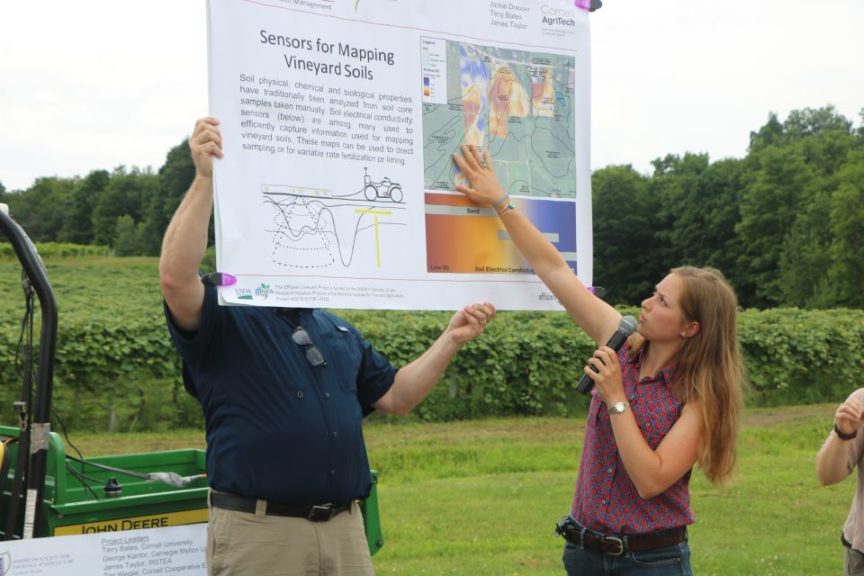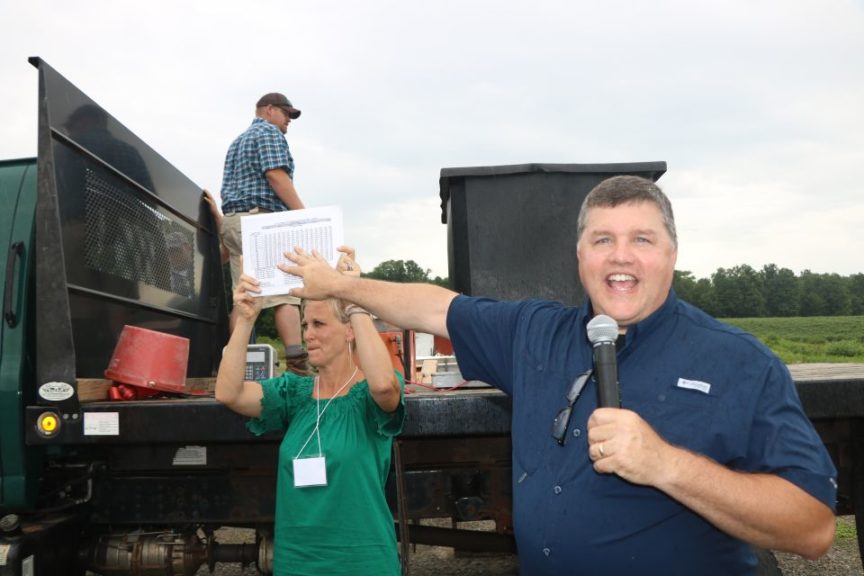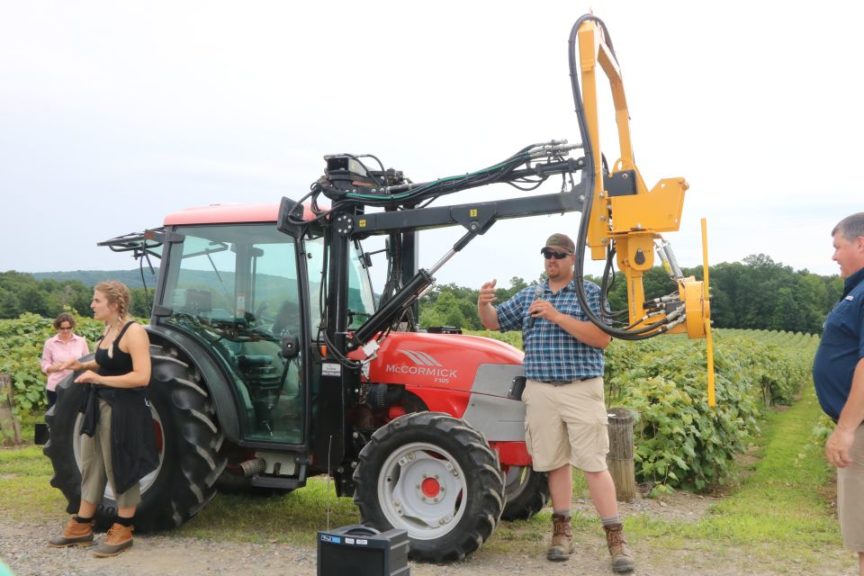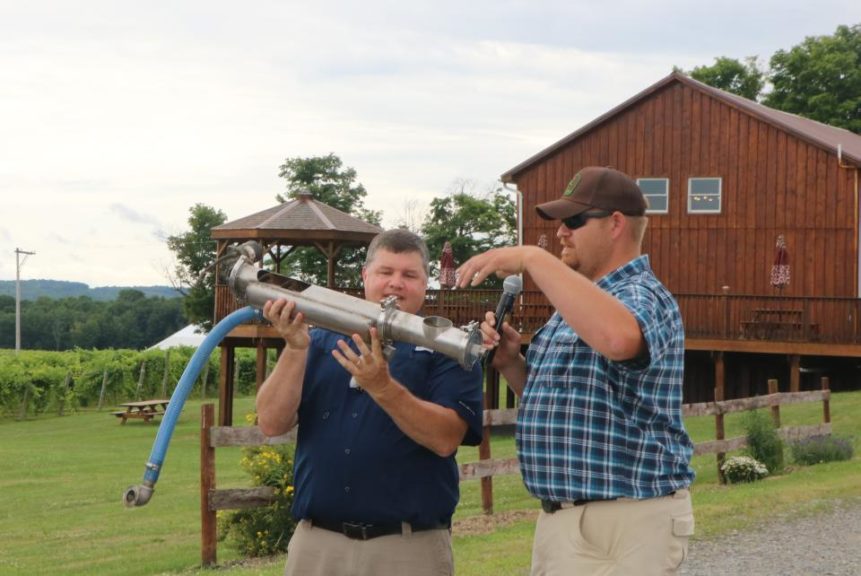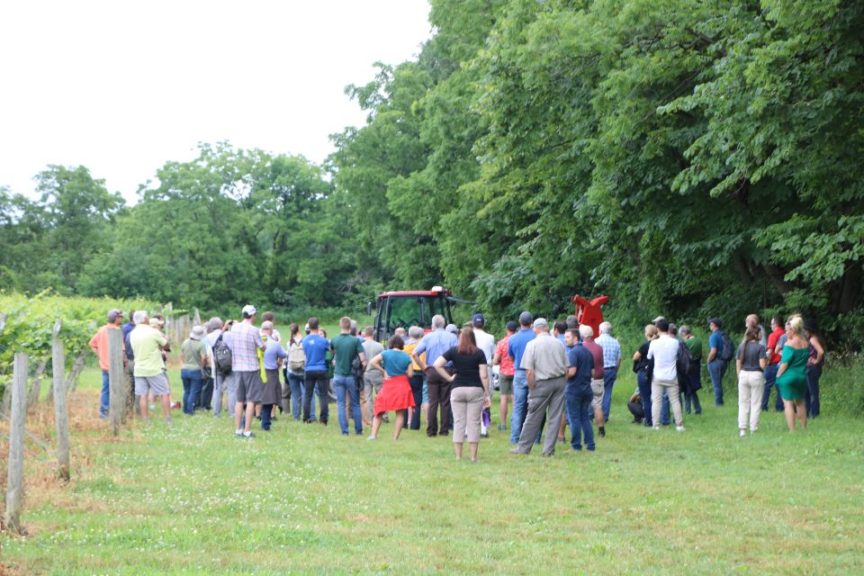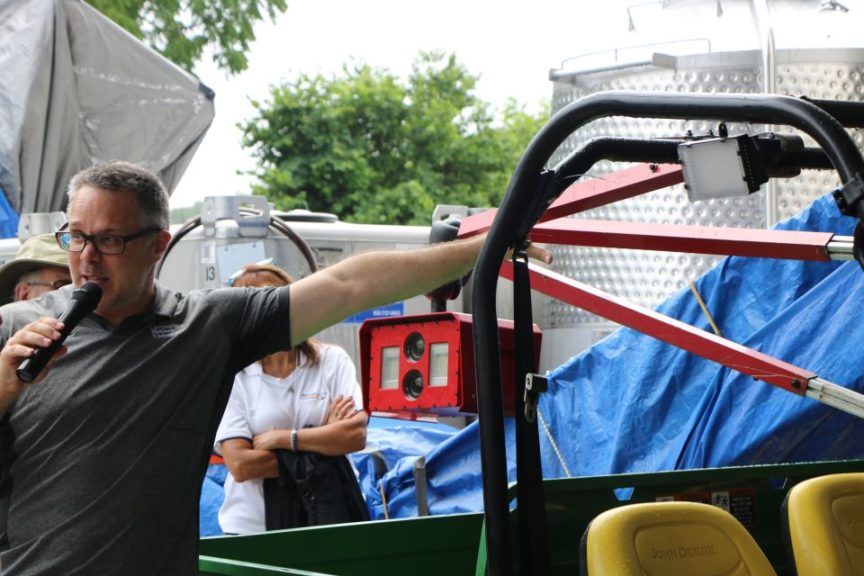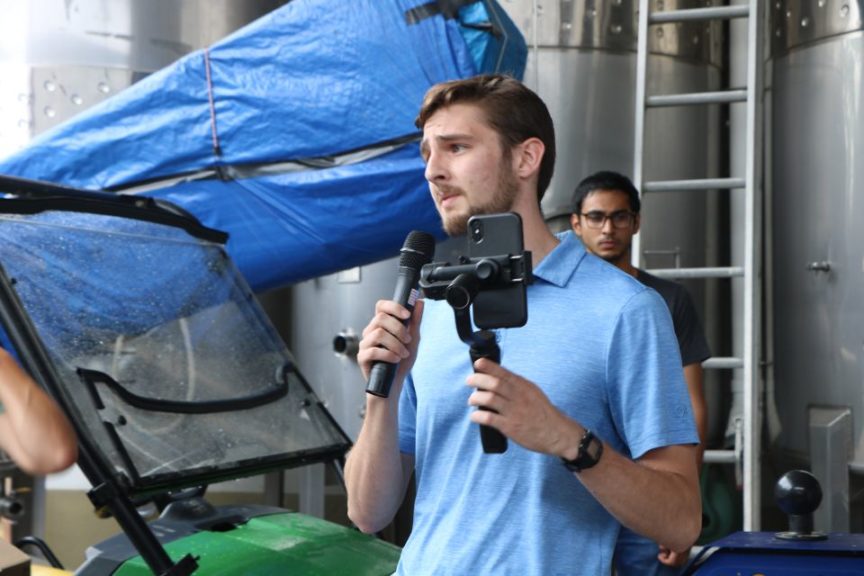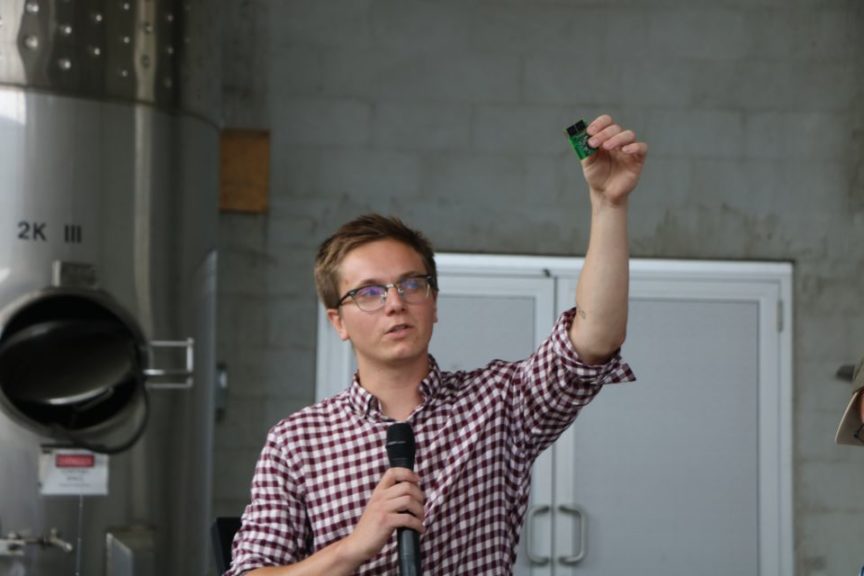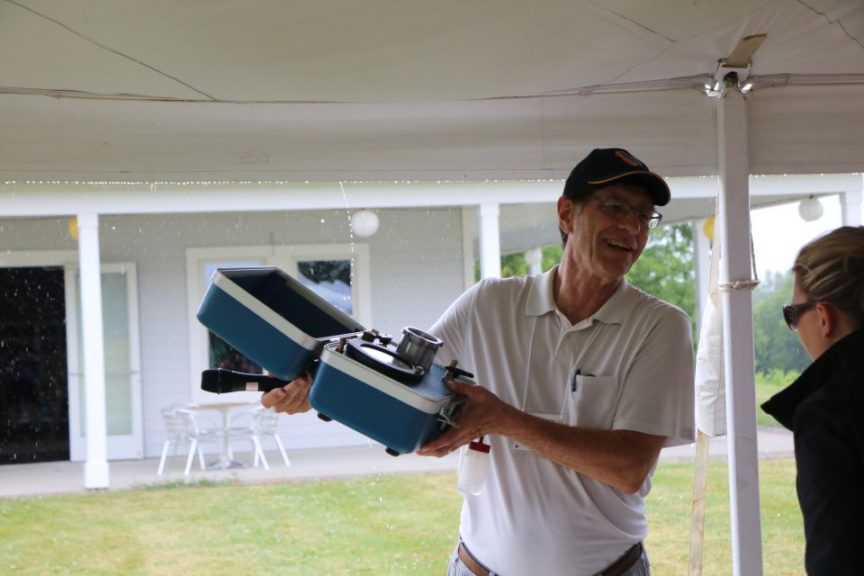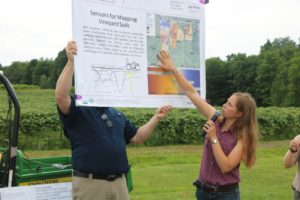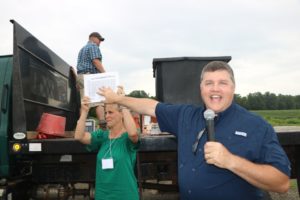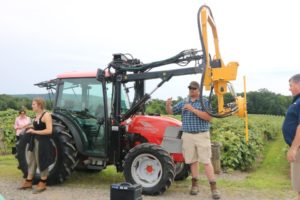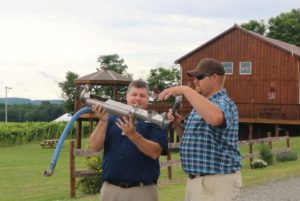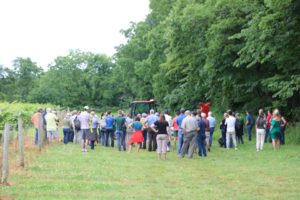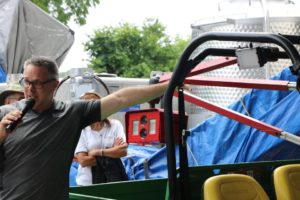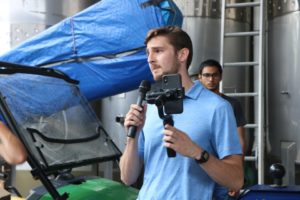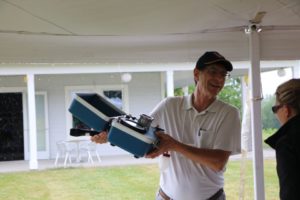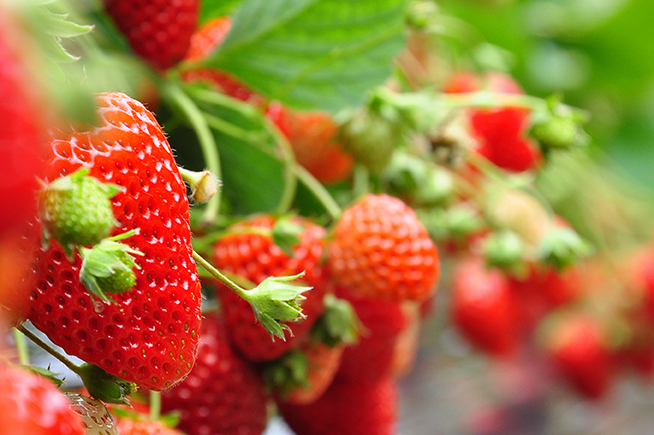Viticulture Goes Digital With Symposium and Tour
Digital viticulture seems like such an ambiguous term for a catch-all of things. But attendees of American Society for Enology and Viticulture, Eastern Section got a chance to see digital viticulture in action during the Nelson J. Shaulis Symposium on Digital Viticulture: New Tools for Precision Management in both a vineyard tour and a symposium.
One thing attendees learned quite quickly is why digital tools are important in the Finger Lakes region of New York – there is great variability in soil and varieties grown and while there are things like soil maps and field scouting, being able to have historical data and layer different measurements together can give growers a better composite of their vineyards.
Problems First
James Taylor, Senior Researcher at the National Research Institute of Science and Technology for Environment and Agriculture in France, says precision viticulture is “just making better decisions.” But, the need for a solution (aka, the problem) must come first.
“We need to be decision pull instead of technology push,” Katie Gold of Cornell University echoed.
Gold gave growers a look at the different light sensors available both commercially and research-wise as well as a peek into future research such as for disease detection.
There’s a lot of potential for the use of sensors. But for now, many sensors like normalized difference vegetation index or NDVI sensors are good for “unhappy plant syndrome.”
“It will tell you that there is a problem, but it won’t tell you what the problem is,” she says.
For growers interested in using light sensors, “decide what info is important to you first, then look for a sensor that can get you what you need,” she says. “Much like fungicides, knowing how sensors work or don’t work is crucial to using them effectively.”
Large-scale operations can definitely benefit from the use of drone imagery. Though, Jim Meyers of Cornell Cooperative Extension’s Eastern New York Commercial Horticulture Program says for his growers “a large block is five acres, and that block has multiple cultivars.”
So, drone use takes on a different meaning.
Meyers illustrated how drones used NDVI to scan the vineyards to see trouble spots and when overlapped with soil maps, he was able to see drainage issues, which created growth variability. He’s also worked with growers to detect color and was then able to help the grower divide up the vineyard sequentially to harvest based on color.
Mechanization Out of Necessity
When Richard Hoff, Director of Viticulture at Mercer Ranches in Prosser, WA, started at the vineyard, he says he was told the owners wanted to mechanize everything.
And he set a lofty goal of everything exceeding 3 to 4 tons per acre. Why mechanize? Hoff says it was an easy choice, driven partially out of necessity.
“We are in the middle of nowhere. My farthest vineyard is an hour and 15 minutes away from my home,” he says. “Anyone we hire is going to drive past other places looking for help.”
The team at Mercer mechanically prunes starting around Thanksgiving in order to cover its 3,300 acres, followed by hand pruning for cleanup. They also mechanically de-sucker, shoot thin, and mulch all in one pass. And, of course, mechanically harvest.
Hoff says with mechanization, growers should expect some variability. Because of that, it’s critical to develop metrics for speed, pruner rotation, etc. And, it’s critical to have mechanics and equipment staff know and understand the settings and double-check that they’re correct.
He says, sometimes “with mechanized tools, people just unleash them.”
Putting the Data to Work
While a large number of data points is a key part of digital viticulture, Taylor says, with all that data, “the real risk is you just drown — it can overload you.” Which is why the Efficient Vineyard project is looking to take a lot of the tools for sensing that are available outside the world of horticulture to see how they can be used within horticulture.
While offering growers easy-to-apply information is a key component of digital viticulture, ensuring the data given is accurate also is critical.
Taylor says decision-support systems, which help process and assess data accurately, has the potential to assist growers in many ways as data rolls in. In order for decision support systems to be useful, a wealth of data is necessary.
“There is a cost in not collecting it,” he says. “You need to start collecting it three years before you really need it.”
George Kantor, Senior Systems Scientist at Carnegie Mellon University, a collaborator on the Efficient Vineyard project, says deep neural network takes data captured from high-resolution cameras and turns it into practical horticultural information. He and his team developed this deep neural network for yield estimation and color grading.
So far, this promising research has been in VSP training systems, but he’s looking at other growing systems to see how the camera responds. The trick is, though, that the camera has to see the fruit to count it.
“We can count the berries that we can see, but we cannot count the berries that we can’t see,” he says.
So, where does that leave the Efficient Vineyard project, which is wrapping up its research?
“We have a sufficient amount of tools in the toolbox,” says Terry Bates, Director of the Lake Erie Research and Extension Laboratory with Cornell University. He’s also the director of the Efficient Vineyard project.
Bates says he’s been happy with incorporating off-the-shelf sensors into the research. He says a key takeaway from the project has been that there’s always going to be data curves within a vineyard in terms of vine size, yield, etc., and the goal of using the tools the Efficient Vineyard project has been to shift the curve positively.
“There’s always going to be some natural variation,” he says.
But, if there are patterns within the variation, growers can separate those variations into zones to manage differently based on vineyard needs.





